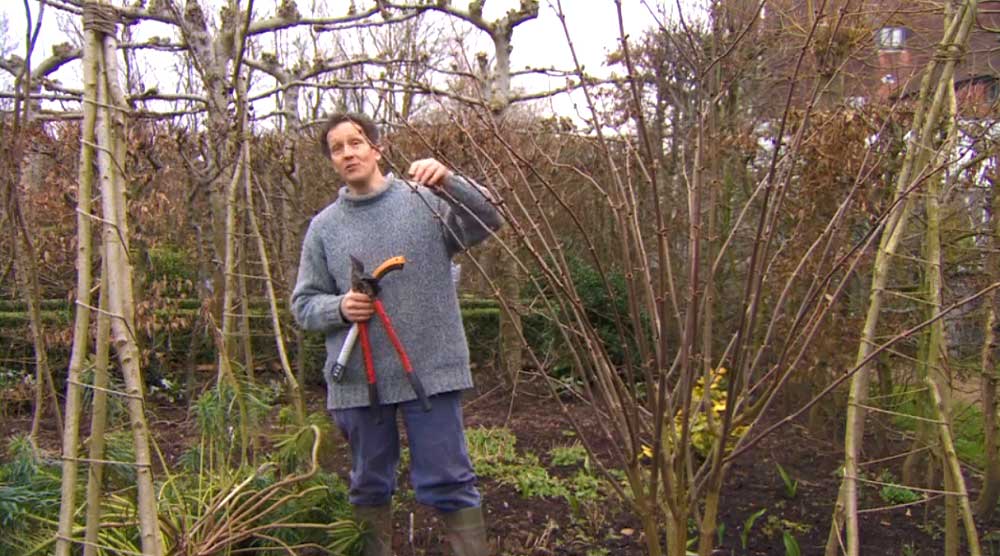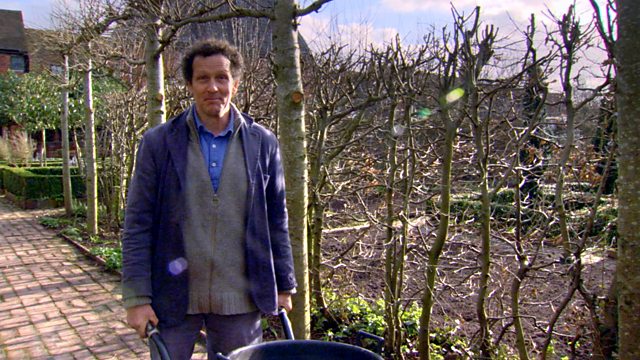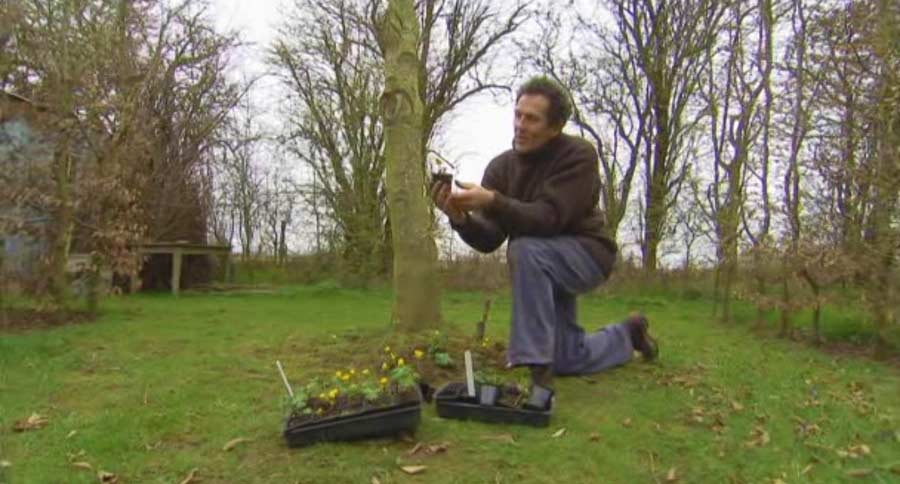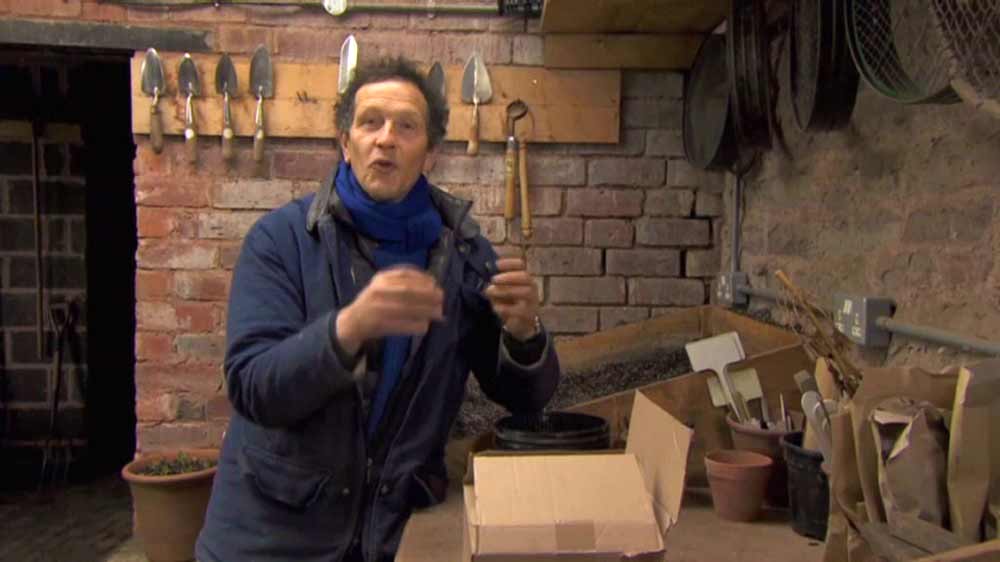Gardeners’ World episode 1 2013: The first signs of spring herald the start of the new gardening year and the start of a new series of Gardeners’ World. In the seasons to come, Monty Don will be in his garden, Longmeadow, and along with Carol Klein, Joe Swift and Rachel de Thame, will have a host of practical tips and inspirational ideas to help viewers improve their gardens.
Monty Don reveals the changes he has made to his garden over the winter, tackles timely pruning tasks and shows us the best way to lay a new path. Snowdrops are lighting up the winter garden and Carol is out and about in Oxfordshire celebrating their staggering diversity and the length to which some gardeners will go in order to get their hands on the latest varieties.
Rachel visits Cambridge Botanic Garden, which has one of the country’s most celebrated winter gardens, to find inspiring plants and planting combinations that not only look fabulous now but that can also provide year round interest.
Over the next few weeks Joe will be helping viewers achieve the garden of their dreams by offering up simple planting design plans for four very different styles of garden. He starts off with the romance of a cottage garden.
Gardeners’ World episode 1 2013
Making brick paths
The right path adds structure and permanence to a garden as well as being really useful for access. Monty used reclaimed bricks to create a rustic looking path in the Writing Garden at Longmeadow but new bricks are readily available.
To build a brick path, excavate a trench at least 20cm deep, fill with a 10cm base of finely broken up rubble and tamp down firmly. For laying bricks of uniform shape and size, top with about 5cm of sand and level off to create a smooth flat surface for laying the bricks on. For uneven sized bricks, like the ones Monty used, sand can be added bit by bit in order to adjust the depth under each brick.
To ensure your path is level, pegs hammered into the ground act as a good guide for the depths of rubble and sand. For straight paths, boards make useful edging; for curving paths, mark out your edges first (hosepipe makes a useful guide) and cement in bricks along each edge. Then infill with bricks placed on sand. With reclaimed bricks, Monty found laying one edge, infilling and then laying the other edge avoided the problems caused by their uneven widths.
Finish by brushing coarse sand or a dry mortar mix into the cracks. After rain, more may be needed to top up.Winter is a good time to tackle these projects before the beds and borders burst into life and need lots of attention. Take care to cover up freshly mortared bricks in wet or frosty conditions to ensure the cement sets firmly.
Cut back autumn-fruiting raspberries
Autumn-fruiting raspberries produce their fruit on the current season’s growth. To prune, cut all stems down to the ground now and then mulch the area with garden compost. Over the next few weeks new shoots will appear; these will form new canes which will produce flowers and then fruit from late summer onwards.
Prune late-flowering clematis – Gardeners’ World episode 1 2013
Late-flowering clematis, such as Clematis viticella should be pruned now as they come into growth. If your Clematis starts flowering in July or August, it is a late-flowering type (often called group 3). Cut all the twiggy stems down to new green buds or shoots near the base. Remove all the top growth and the remaining buds will produce a mass of new shoots which should be smothered in flowers later in the year.
Sow chillies, peppers and celeriac
There’s no hurry to sow seed but if you are going to get started then begin with chillies, peppers and celeriac which are all slow to germinate and need a long growing season to do well. Sow seed in a seed tray or pot filled with multipurpose or seed compost and cover thinly. Place in a warm place, such as a heated propagator or sunny windowsill, to germinate.
Waterlogging and flooding – Gardeners’ World episode 1 2013
Few garden plants will survive waterlogging or flooding. Prolonged periods of sitting in soil saturated with water reduces the oxygen available to the roots and causes yellow leaves, root rot and death. However, conditions can be improved using various techniques to promote drainage and prevent damage.
Soils become waterlogged when water is unable to drain away. This leaves no air spaces in the saturated soil, and plant roots literally drown. Waterlogging is common on naturally poorly drained soils or when heavy soils are compacted. Short-lived flash floods after a downpour seldom harm most plants. It is prolonged, saturated soil that cause the most damage as the oxygen is used up by the plant roots and soil microorganisms.
Flooding from overflowing drains can add the complication of sewage and waste water, especially if growing edible crops.
Pruning for colourful stems or large foliage
When some shrubs are pruned hard, they regrow vigorously producing more colourful stems that brighten up the garden in winter. Others can also be hard-pruned to create a large-leaved effect. These methods, when applied to trees, are often called coppicing and pollarding, but when applied to small shrubs the term ‘stooling’ is commonly used. Such plants fall into RHS Pruning group 7.
Late winter (February) or early spring (March), before the leaves begin to appear on the stems, is traditionally considered the best time to prune. However, to allow the maximum time to enjoy colourful stems, shrubby Cornus and willows are now typically pruned from late March to mid-April, just as the new growth is developing.
Plant roots and shoots are in balance and, after hard pruning, plants will regrow to re-establish this balance. It is important to prune in the dormant season as the plant resources are largely in the roots and can be used for the required vigorous regrowth. If pruned in summer, plant resources – which, by this time, are predominantly found in the leaves – will be removed, and regrowth will be less strong.
Monty Don in Gardeners’ World episode 1 2013
Monty Don was born in West Berlin to British parents Denis Thomas Keiller Don, a career soldier posted in Germany, and Janet Montagu (née Wyatt). Both of his paternal grandparents were Scottish, through whom he is descended from botanist George Don and the Keiller family of Dundee, inventors of a brand of marmalade in 1797. On his maternal side, he is descended from the Wyatts, who were a prominent dynasty of architects. Both parents died in the 1980s. Don has a twin sister, an elder brother David, and two other siblings. His twin suffered a broken neck and blindness after a car crash, at the age of 19. Don describes his parents as being “very strict”.
Don was educated at three independent schools: Quidhampton School in Basingstoke, Hampshire, Bigshotte School in Wokingham, Berkshire, and at Malvern College in Malvern, Worcestershire, a college he hated. He then attended a state comprehensive school, the Vyne School, in Hampshire. He failed his A levels and while studying for re-takes at night school, worked on a building site and a pig farm by day. During his childhood he had become an avid gardener and farmer. He was determined to go to Cambridge out of “sheer bloody-mindedness”, attending Magdalene College, where he read English and met his future wife Sarah. He was a Cambridge Half Blue for boxing.
Gardeners’ World
Gardeners’ World is a long-running BBC Television programme about gardening, first broadcast on 5 January 1968 and still running as of 2019. Its first episode was presented by Ken Burras and came from Oxford Botanical Gardens. The magazine BBC Gardeners’ World is a tie-in to the programme. Most of its episodes have been 30 minutes in length, although there are many specials that last longer. The 2008 and 2009 series used a 60-minute format as did the 2016 series from episode 23, for eight episodes in total.





Pingback: Glorious Gardens from Above episode 6 - Oxfordshire — HDclump